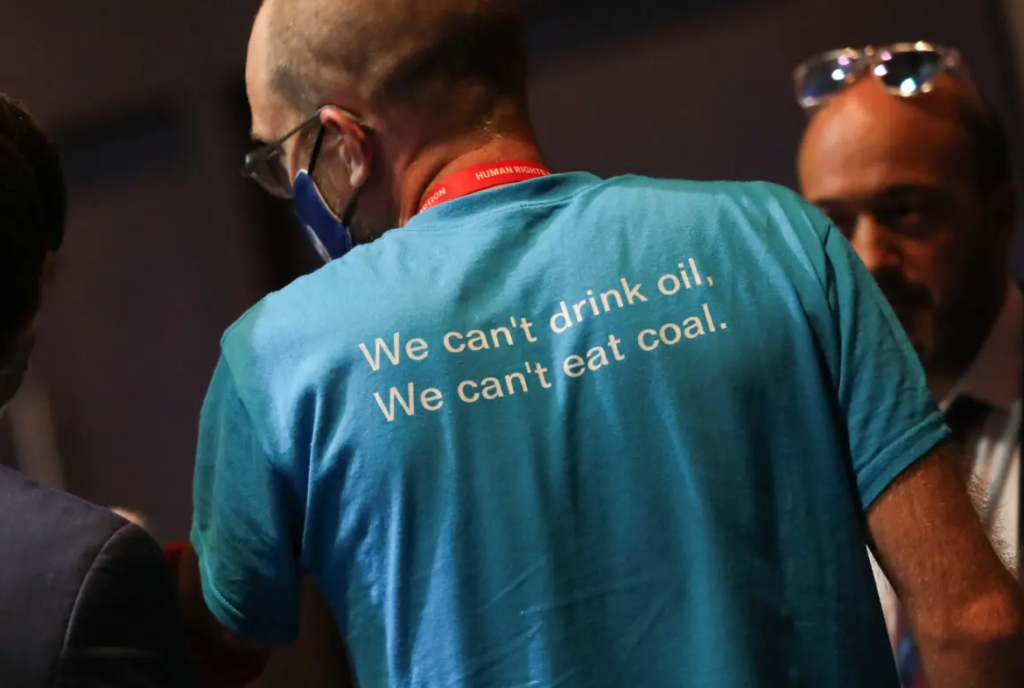What has the Sharm Implementation Plan decided on the mitigation chapter?
(sustainabilityenvironment.com) – The price paid for having an agreement on loss and damage at COP27 is very high: the Sharm Implementation Plan contains no progress on mitigation, that is, the reduction of emissions to limit the impact of climate change.
A contradiction. Loss and damage exist because we have not done enough to cut greenhouse gases and on the front of adaptation. Continuing to do nothing only means laying the foundations for an even more devastating impact of the climate crisis. And therefore increase the price – human, social, economic – of losses and damages.
In this second study on the Sharm summit, after the one dedicated to the historic agreement on losses and damages, we see in detail what the final agreement reached in the early hours of Sunday, November 20 at COP27 provides in the area of mitigation.
Fossils? What fossils?
Once again, the climate negotiation process that began 30 years ago fails to write the word “fossil fuels” in black and white. The COP26 of Glasgow on this aspect had at least taken a step forward by finally mentioning coal and establishing that the use of this source – the most polluting of fossils – must at least be “reduced” (phase down). At COP27 it was even difficult to keep this point in the final agreement.
Indeed, the text of the Sharm Implementation Plan merely repeats the wording used 12 months ago in Scotland. They remain out of the two demands made by dozens and dozens of countries: a reference to the gradual cancellation (phase out) of all fossil fuels and the commitment to reach the peak of emissions no later than 2025.
The first point would be supported by as many as 80 countries, if you believe what Frans Timmermans, the vice-president of the EU Commission with a climate delegation who negotiated for the 27, said during the final plenary. The second is a point that climate science declares essential if we want to hope to keep global warming below 1.5 ºC.
Last year it was India, at the very last minute, that weakened the agreement by prolonging the life of coal. This year, Saudi Arabia, Russia and Iran have held back. By contesting different parts of the agreement, calling into question already consolidated parts, in a push and pull that has prolonged the negotiations for many hours. And they finally got it. Timmermans had threatened to blow up the conference without a better, more ambitious part about cutting emissions. But at the last second the EU chose not to sink even the historic agreement on losses and damages (Timmermans spoke of a “moral dilemma”).
Subsidies and “low emissions”
The Sharm Implementation Plan, therefore, in point 28 only reiterates – without strengthening – the request to “accelerate efforts to reduce coal without emission abatement technologies” (unabated) and “for the elimination of inefficient subsidies for fossil fuels“. On subsidies, an unforeseen defeat came close: in the drafts of the final text a second option appeared next to the phase out: the “rationalization”. Clearly, either cancel the benefits or “rationalize” them. Whatever it means to rationalize, in fact, it means to keep them, even if they are reduced. In short, it was an attempt to turn the phase-out into a disguised phase-down.
It was even more complicated to maintain the (already scarce) ambition established with the Glasgow Pact on the energy transition front. On the extra day of negotiations, the COP27 in Sharm saw a real assault on the short chapter Energy. Someone (Iran certainly, along with other countries whose identity is not known for certain) threatened to reject the whole agreement if it was not canceled or rewritten, even if that part of the text was already considered definitive for many hours.
Much noise aimed, in fact, to insert two words: “low-emission”, low emissions. Where? Every time the text mentions renewable energy. As an option of equal level and dignity to achieve a necessary cut in emissions that the agreement defines as “immediate, deep, rapid and sustained”. An amendment that will allow anyone to claim that they are doing enough to limit greenhouse gases just because they build hydrogen-ready pipelines but still use fossil gas, equips themselves with emission abatement technologies (CCS), or other similar actions, without really changing the economic, productive and energy structure of the country. In practice, yet another delay on the road to decarbonisation. Which makes the fossils survive longer.
Sharm Implementation Plan closes two eyes on NDCs
Then there is another hot topic, that of voluntary national contributions (NDC). COP26 had accelerated the process of updating NDCs compared to the Paris agreement. It had failed to achieve enough ambition in 2021, but it had put in place a mechanism that pushed states to submit more ambitious national plans every few years, until 2030. The Sharm Implementation Plan here does not implement anything: it undoes what little has been achieved.
Read also COP27 by Sharm: historic agreement on loss & damage, but stutters on everything else
While, in point 15, the agreement acknowledges that “limiting global warming to 1.5% requires rapid, deep and sustained reductions in global greenhouse gas emissions of 43% by 2030 compared to the 2019 level”, in the following points (17-29) creates new barriers on the path outlined at COP26. It does so without unhinging the existing, but only – as in other parts of the agreement we tried to do – adding (or not adding) a few words to the text. They allow for wider interpretations, widen the margins of ambiguity, leave greater room for manoeuvre.

